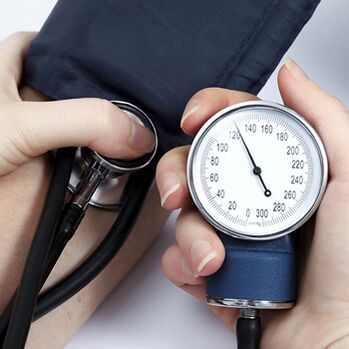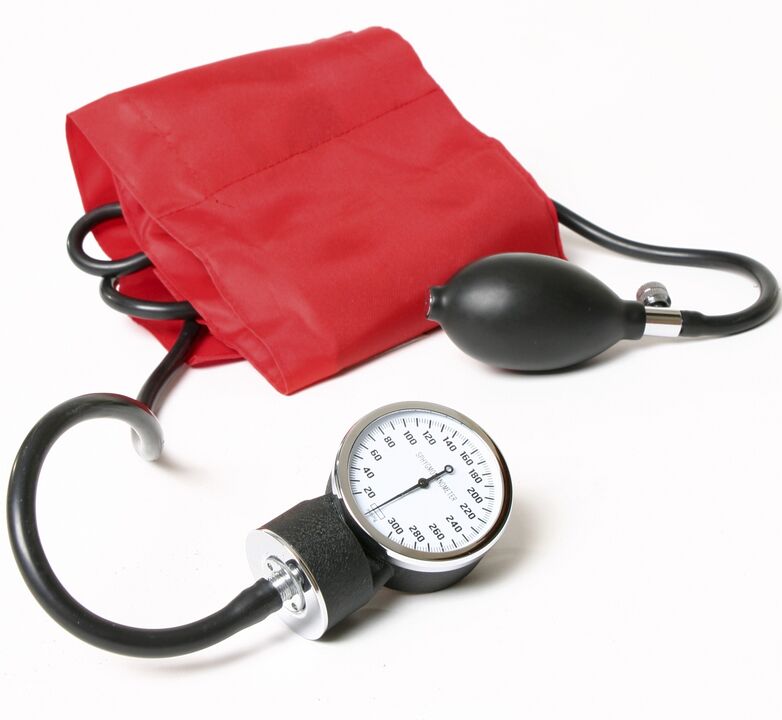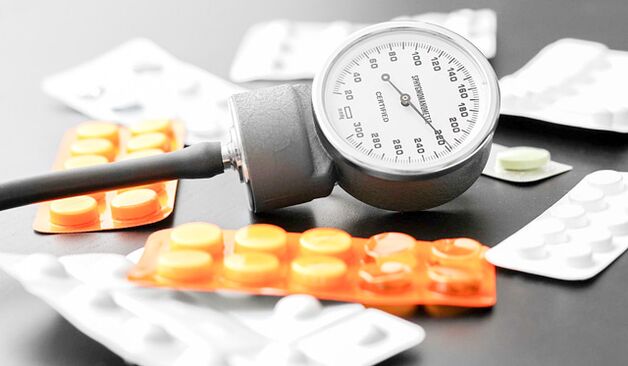
Hypertension (HTN) is one of the most common diseases of the cardiovascular system, which, according to approximate data, affects only a third of the planet's inhabitants. Between the ages of 60 and 65, more than half of the population has been diagnosed with hypertension. The disease is called a "silent killer", because its signs can be absent for a long time, while changes in the walls of blood vessels begin already in the asymptomatic stage, significantly increasing the risk of strokes.
In Western literature, the disease is called arterial hypertension (AH). Others have adopted this wording, although "hypertension" and "hypertension" are still in common use.
Particular attention to the problem of arterial hypertension is caused not so much by its clinical manifestations as by complications in the form of acute vascular disorders of the brain, heart and kidneys. Their prevention is the main goal of treatment aimed at maintaining normal blood pressure (BP).
An important point is to identify all possible risk factors,as well as to elucidate their role in disease progression. The relationship between the degree of hypertension and existing risk factors is displayed in the diagnosis, which simplifies the assessment of the patient's condition and prognosis.
For most patients, the numbers in the diagnosis after "AH" mean nothing, although it is clear that the higher the degree and the risk indicator, the worse the prognosis and the more serious the pathology. In this article we will try to understand how and why this or that degree of hypertension is diagnosed and what underlies the determination of the risk of complications.
Causes and risk factors for hypertension
The causes of high blood pressure are numerous. GovernmentSpeaking of primary or essential hypertension, we andWe mean the case when there is no specific disease or pathology of internal organs. In other words, such hypertension occurs on its own, involving other organs in the pathological process. Primary hypertension accounts for more than 90% of cases of chronic hypertension.
The main cause of primary hypertension is considered to be stress and psycho-emotional overload, which contribute to the disruption of the central mechanisms of pressure regulation in the brain, then humoral mechanisms suffer and target organs are involved (kidneys, heart, retina).

Secondary hypertension– a manifestation of another pathology, its cause is therefore always known. It accompanies diseases of the kidneys, heart, brain, endocrine disorders and is secondary to them. After the underlying disease is cured, hypertension also disappears, so it makes no sense to determine the risk and degree in this case. Symptomatic hypertension represents no more than 10% of cases.
The risk factors for hypertension are also known to everyone. Hypertension schools are created in clinics, whose specialists convey information to the population about unfavorable conditions leading to hypertension. Any therapist or cardiologist will inform the patient of the risks from the first recorded case of high blood pressure.
Among the conditions predisposing to hypertension, the most important are:
- Smoking;
- Excess salt in food, excessive fluid intake;
- Insufficient physical activity;
- Alcohol abuse;
- Excess weight and fat metabolism disorders;
- Chronic psycho-emotional and physical overload.
If we can exclude the listed factors or at least try to reduce their impact on health, then characteristics such as gender, age, heredity cannot be changed and therefore we will have to put up with them, not forgetting about the riskcroissant.
Classification of high blood pressure and determination of risk level
Classification of hypertension involves identifying the stage, degree of disease and level of risk of stroke.
Stage of diseasedepends on clinical manifestations. Emphasize:
- Preclinical stage, when there are no signs of hypertension and the patient is unaware of the increase in blood pressure;
- Stage 1 of hypertension, when the pressure is high, attacks are possible, but there are no signs of damage to a target organ;
- Stage 2 is accompanied by damage to the target organs - the myocardium hypertrophies, changes in the retina of the eyes are noticeable, and the kidneys suffer;
- At stage 3, strokes, myocardial ischemia, visual pathology, changes in large vessels (aortic aneurysm, atherosclerosis) are possible.
Degree of hypertension
Determining the degree of hypertension is important for assessing risk and prognosis and is based on pressure figures. It must be said that normal blood pressure values also have a different clinical meaning. Thus, the indicator goes up to 120/80 mm Hg. Art. accountoptimal,normalthe pressure will be between 120 and 129 mmHg. Art. systolic and 80-84 mm Hg. Art. diastolic. Pressure numbers 130-139/85-89 mmHg. Art. are still within normal limits, but are approaching the border with pathology, which is why they are called "complitly normal", and the patient can be told that he has high normal blood pressure. These indicators can be considered pre-pathological, because the pressure is only "a few millimeters" from being elevated.

From the moment the blood pressure reaches 140/90 mm Hg. Art. we can already talk about the presence of the disease. This indicator allows you to determine the degree of hypertension itself:
- The 1st degree of hypertension (HTN or AH 1st stage of diagnosis) means an increase in pressure between 140-159/90-99 mmHg. Art.
- Stage 2 headaches are accompanied by numbers 160-179/100-109 mm Hg. Art.
- With stage 3 hypertension, the pressure is 180/100 mmHg. Art. and higher.
It happens that the figures for systolic pressure increase, amounting to 140 mm Hg. Art. and above, while the diastolic value is within normal values. In this case they are talking aboutisolated systolic formhypertension. In other cases, the indicators of systolic and diastolic pressure correspond to different degrees of the disease, then the doctor makes a diagnosis in favor of a higher degree, and it does not matter whether conclusions are made on the basis of pressuresystolic or diastolic.
The most accurate diagnosis of the degree of hypertension is possible when the disease is first diagnosed, when treatment has not yet been carried out and the patient has not taken any antihypertensive drugs. During treatment, the numbers decrease, and when it is interrupted, on the contrary, they can increase sharply, so that it is no longer possible to correctly assess the degree.
The notion of risk in diagnosis
Hypertension is dangerous because of its complications. It's no secret that the vast majority of patients die or become disabled not because of high blood pressure itself, but because of the acute disorders it causes.
Cerebral hemorrhages or ischemic necrosis, myocardial infarction, renal failure are the most dangerous conditions caused by high blood pressure. In this regard, for each patient after a thorough examinationthe risk is determined, indicated in the diagnosis by the numbers 1, 2, 3, 4. Thus, the diagnosis is based on the degree of hypertension and the risk of vascular complications (for example, hypertension/hypertension stage 2, risk 4).
Risk stratification criteriaFor patients suffering from hypertension, external conditions, the presence of other diseases and metabolic disorders, involvement of target organs and concomitant changes in organs and systems are used.
The main risk factors affecting prognosis include:
- The age of the patient is greater than 55 years for men and 65 years for women;
- Smoking;
- Lipid metabolism disorders (exceeding the norm of cholesterol, low-density lipoproteins, decrease in high-density lipid fractions);
- Presence of cardiovascular pathology in the family among relatives under 65 and 55 years of age for women and men, respectively;
- Excess body weight, when the abdominal circumference exceeds 102 cm in men and 88 cm in women.
The listed factors are considered the main ones, but many patients with hypertension suffer from diabetes, glucose intolerance, lead a sedentary lifestyle and have abnormalities in the blood coagulation system in the form of an increase infibrinogen concentration. These factors consideradditional, also increasing the risk of complications.
Target organ damage characterizes hypertension, starting from stage 2, and is an important criterion by which risk is determined. Therefore, the patient's examination includes an ECG, ultrasound of the heart to determine the degree of hypertrophy of his muscles, blood and urine tests for indicators of kidney function (creatinine, protein).
First of all, the heart suffers from high blood pressure, which pushes blood through the vessels with increased force. As arteries and arterioles change, as their walls lose elasticity and their lumens become spasmodic, the load on the heart gradually increases. A characteristic element taken into account during risk stratificationmyocardial hypertrophy, which can be suspected by ECG, can be determined by ultrasound.
The involvement of the kidneys as a target organ is indicated by an increase in creatinine in blood and urine and the appearance of albumin protein in urine. Against the background of hypertension, the walls of large arteries thicken and atherosclerotic plaques appear, detectable by ultrasound (carotid, brachiocephalic arteries).
The third stage of hypertension occurs with associated pathology, that is, associated with hypertension.Among the associated diseases, the most important for the prognosis are stroke, transient ischemic attacks, cardiac infarction and angina, nephropathy due to diabetes, renal failure, retinopathy (retinal damage)due to hypertension.
So the reader probably understands how you can even independently determine the degree of headache. It's not difficult, just measure the pressure. Then you can think about the presence of certain risk factors, take into account age, gender, laboratory parameters, ECG data, ultrasound, etc. In general, all of the above.
For example, a patient's blood pressure corresponds to stage 1 hypertension, but at the same time he suffered a stroke, which means that the risk will be maximum – 4, even if the stroke is theonly problem apart from hypertension. If the pressure corresponds to the first or second degree and the only risk factors that can be noted are smoking and age against the background of fairly good health, then the risk will be moderate - 1 tbsp. (2 tablespoons), risk 2.
To clarify what the risk indicator means in a diagnosis, you can summarize everything in a small table. By determining your degree and "counting" the factors listed above, you can determine the risk of strokes and complications of hypertension for a particular patient. The number 1 means low risk, 2 – moderate, 3 – high, 4 – very high risk of complications.
| Risk factors | BP 130-139/85-89, risk | GB (AH) 1, risk | GB 2, risk | GB 3, risk |
|---|---|---|---|---|
| none | 1 | 2 | 3 | |
| 1-2 | 1 | 2 | 2 | 4 |
| more than three factors/target damage/diabetes | 3 | 3 | 3 | 4 |
| associated pathology | 4 | 4 | 4 | 4 |
Low risk means that the probability of stroke does not exceed 15%, moderate - up to 20%, high risk indicates the development of complications in a third of patients in this group, with very high risk in more than30% of patients. prone to complications.
Manifestations and complications of headaches
Manifestations of hypertension are determined by the stage of the disease. During the preclinical period, the patient feels well and only tonometer readings indicate the development of a disease.

As changes in blood vessels and the heart progress, symptoms appear in the form of headaches, weakness, decreased performance, periodic dizziness, visual symptoms in the form of weakened visual acuity, "spots» flashing in front of the eyes. All these signs are not expressed during a stable course of pathology, but at the time of the development of a hypertensive crisis, the clinic becomes brighter:
- Severe headaches;
- Noise, ringing in the head or ears;
- Darkening of eyes;
- Pain in heart region;
- Dyspnea;
- Facial hyperemia;
- Excitement and feeling of fear.
Hypertensive crises are provoked by traumatic situations, overwork, stress, consumption of coffee and alcoholic beverages, therefore patients with an already established diagnosis should avoid such influences. In the context of a hypertensive crisis, the risk of complications increases sharply, including potentially fatal ones:
- Hemorrhage or cerebral infarction;
- Acute hypertensive encephalopathy, possibly accompanied by cerebral edema;
- Pulmonary edema;
- Acute renal failure;
- Heart attack.
How to measure blood pressure correctly?
If there is reason to suspect high blood pressure, the first thing a specialist will do is measure it. Until recently, it was believed that blood pressure values can normally differ in different hands, but, as practice shows, even a difference of 10 mm Hg. Art. can occur due to pathology of peripheral vessels, therefore different pressures on the right and left hands should be treated with caution.

To obtain the most reliable figures, it is recommended to measure the pressure three times on each arm at short time intervals. , recording each result obtained. In most patients, the smallest values obtained are the most correct, but in some cases the pressure increases from measurement to measurement, which does not always speak in favor of hypertension.
A wide selection and availability of blood pressure measuring devices makes it possible to monitor it in a wide range of people at home. As a rule, hypertensive patients have a tonometer at hand at home, so that if their health deteriorates, they can immediately measure their blood pressure. It should be noted, however, that fluctuations are also possible in completely healthy individuals without hypertension. Therefore, a single excess of the norm should not be considered a disease and to make a diagnosis of hypertension, the pressure must be measured at different times. , under different conditions and on several occasions.
When diagnosing hypertension, blood pressure figures, electrocardiography data and cardiac auscultation results are considered fundamental. When listening, it is possible to detect noise, increased tones and arrhythmias. The ECG, starting from the second stage, will show signs of stress on the left side of the heart.
Treatment of hypertension
To correct high blood pressure, treatment regimens have been developed, including drugs of different groups and different mechanisms of action. Theirthe combination and dosage are chosen individually by the doctortaking into account the stage, concomitant pathology and response of hypertension to a specific drug. After the diagnosis of hypertension is established and before the start of drug treatment, the doctor will offer non-drug measures that significantly increase the effectiveness of pharmacological drugs and sometimes allow you to reduce the dose of drugs or abandon at least some of them.
First of all, it is recommended to normalize the diet, eliminate stress and ensure physical activity. The diet aims to reduce the consumption of salt and fluids, eliminating alcohol, coffee, drinks and substances that stimulate the nervous system. If you are overweight, limit calories and avoid fatty, floury, fried and spicy foods.
Non-drug measures at the initial stage of hypertension can have such an effect that it is no longer necessary to prescribe medications. If these measures do not work, the doctor prescribes appropriate medications.
The goal of treating hypertension is not only to reduce blood pressure, but also to eliminate, if possible, its cause.

Antihypertensive drugs from the following groups are traditionally used to treat hypertension:
- Diuretics;
- Angiotensin II receptor antagonists;
- ACE inhibitors;
- Adrenergic blockers;
- Calcium channel blockers.
Every year the list of drugs that reduce blood pressure grows and at the same time becomes more effective and safer, with fewer side effects. At the beginning of treatment, a drug is prescribed in a minimum dose; if it is ineffective, it can be increased. If the disease progresses and the pressure does not remain at acceptable values, another drug from a different group is added to the first drug. Clinical observations show that the effect is better with combined therapy than with prescribing a single drug in maximum quantity.
It is important to reduce the risk of vascular complications when choosing a treatment regimen.Thus, it has been found that certain combinations have a more pronounced "protective" effect on the organs, while others allow better pressure control. In such cases, experts prefer a combination of medications that reduces the risk of complications, even if there are daily fluctuations in blood pressure.
In some cases, it is necessary to take into account concomitant pathology, which requires adjusting headache treatment regimens. For example, men with prostate adenoma are prescribed alpha-blockers, the constant use of which is not recommended to reduce blood pressure in other patients.
ACE inhibitors, the most widely used calcium channel blockers,which are prescribed to young and elderly patients, with or without concomitant diseases, diuretics, sartans. Medicines from these groups are suitable for initial treatment, which can then be supplemented with a third medicine of a different composition.
ACE inhibitors reduce blood pressure and at the same time have a protective effect on the kidneys and myocardium. They are preferable in young patients, women taking hormonal contraceptives, indicated in diabetes, and in older patients.
Diureticsno less popular. To reduce side effects, they are combined with ACE inhibitors, sometimes "in a single tablet".
Beta-blockersdo not constitute a priority group for hypertension, but are effective for concomitant cardiac pathologies - heart failure, tachycardia, coronary heart disease.
Calcium channel blockersoften prescribed in combination with ACE inhibitors, they are particularly effective in bronchial asthma associated with hypertension, because they do not cause bronchospasm.
Angiotensin receptor antagonists– the most prescribed group of drugs for hypertension. They effectively reduce blood pressure and do not cause coughing like many ACE inhibitors. But in the United States, they are particularly common due to a 40% reduction in the risk of Alzheimer's disease.
When treating hypertension, it is important not only to choose an effective diet, but also to take the drugs for a long time, even for life. Many patients think that when the pressure reaches normal levels, treatment can be stopped, but they take the pills at the time of the attack. We know that the non-systematic use of antihypertensive drugs is even more harmful to health than the complete absence of treatment. Therefore, informing the patient about the duration of treatment is one of the important tasks of the doctor.



























